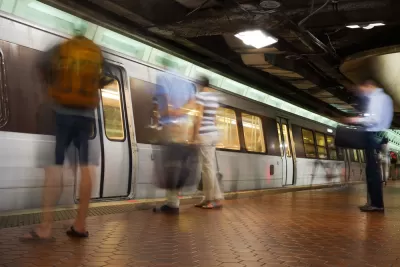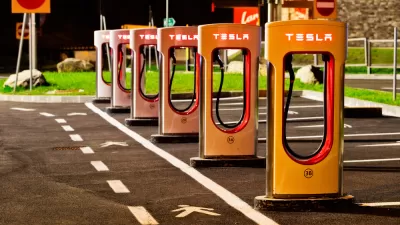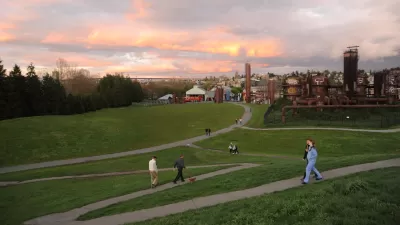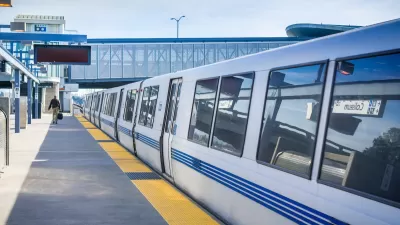To achieve its stated emissions reduction goal, the Greater Washington area must sharply reduce driving and speed up the adoption of electric vehicles.

A Climate Change Mitigation Study from the National Capital Region Transportation Planning Board (TPB) reveals that to reduce emissions by 50 percent from 2005 levels by 2030, the D.C. region must shift travel modes to cut driving by 20 percent and boost EV sales to half or more of new vehicles, reports Bill Pugh.
Unless every single driver switched to an electric vehicle immediately—according to the article, "a hypothetical impossibility"—reducing automobile dependence by making communities more walkable and boosting public transit is the only way to effectively reduce air pollution and meet regional climate goals.
The study was undertaken after the TPB's initial climate plan received criticism for not setting specific driving reduction goals. According to the study, the region must implement "a comprehensive approach of transit-oriented and walkable land use for new development, meeting the region’s adopted goals to build more housing near transit and make it affordable, improving transit travel times and access to stations, reducing transit fares, pricing parking in job centers, and assuming a continued high level of telework." Additional strategies include road pricing and fare-free transit. Pugh notes that the study poses some important questions for future policy as the TPB develops its 2045 long-range transportation plan next year.
FULL STORY: Here’s what it will take for Greater Washington to cut climate pollution from cars and trucks fast enough

Trump Administration Could Effectively End Housing Voucher Program
Federal officials are eyeing major cuts to the Section 8 program that helps millions of low-income households pay rent.

Planetizen Federal Action Tracker
A weekly monitor of how Trump’s orders and actions are impacting planners and planning in America.

Ken Jennings Launches Transit Web Series
The Jeopardy champ wants you to ride public transit.

Rebuilding Smarter: How LA County Is Guiding Fire-Ravaged Communities Toward Resilience
Los Angeles County is leading a coordinated effort to help fire-impacted communities rebuild with resilience by providing recovery resources, promoting fire-wise design, and aligning reconstruction with broader sustainability and climate goals.

When Borders Blur: Regional Collaboration in Action
As regional challenges outgrow city boundaries, “When Borders Blur” explores how cross-jurisdictional collaboration can drive smarter, more resilient urban planning, sharing real-world lessons from thriving partnerships across North America.

Philadelphia Is Expanding its Network of Roundabouts
Roundabouts are widely shown to decrease traffic speed, reduce congestion, and improve efficiency.
Urban Design for Planners 1: Software Tools
This six-course series explores essential urban design concepts using open source software and equips planners with the tools they need to participate fully in the urban design process.
Planning for Universal Design
Learn the tools for implementing Universal Design in planning regulations.
Ada County Highway District
Clanton & Associates, Inc.
Jessamine County Fiscal Court
Institute for Housing and Urban Development Studies (IHS)
City of Grandview
Harvard GSD Executive Education
Toledo-Lucas County Plan Commissions
Salt Lake City
NYU Wagner Graduate School of Public Service





























